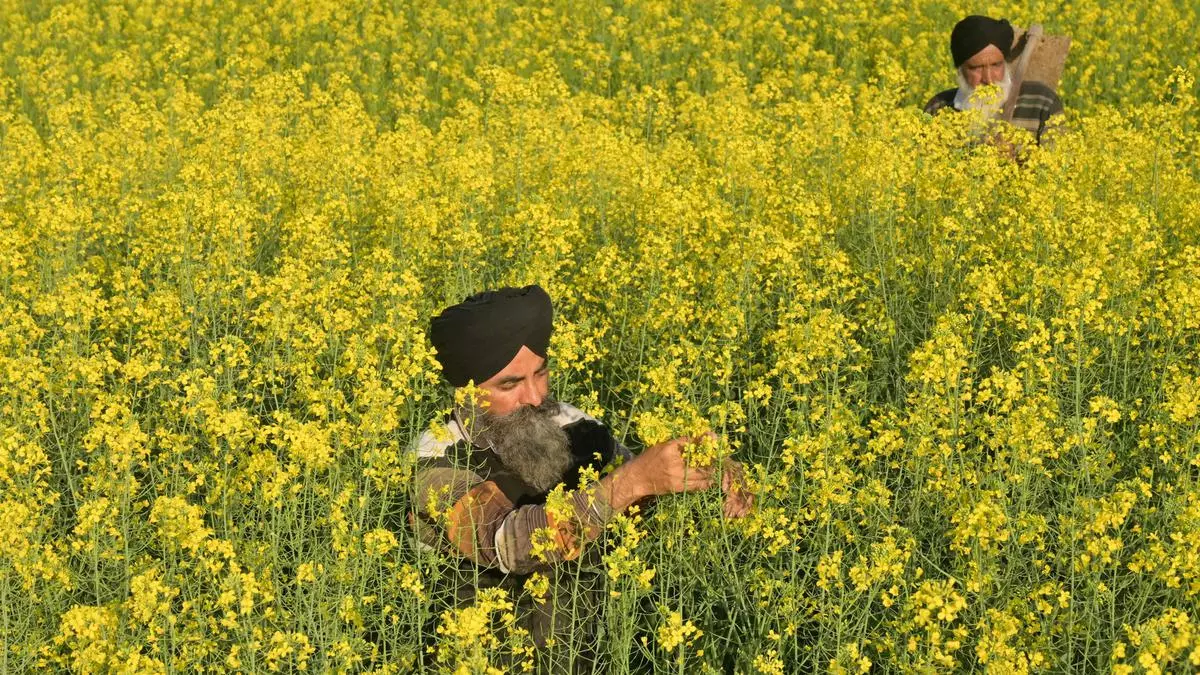Centre selects Jharkhand to scale up mustard output
After piloting a mustard project in seven districts for last seven years in Jharkhand, the Centre will scale up it to cover entire state with target oriented delivery to increase both area from current four lakh hectare (lh) and yield from eight quintal per hectare to help achieve the larger objective of self sufficiency in edible oil. This may become a part of the scheme to be announced in first 100 days of the next government at the Centre, sources said.
The union agriculture ministry has approved the scaling up plan for Jharkhand while working on similar projects for other states after Finance Minister announced in the interim Budget 2024-25 a new scheme to be unveiled for the edible oil sector, particularly to focus on raising the production of mustard, groundnut and soyabean, sources said.
- Also read: Annapurna Swadisht set to enter edible oil market with acquisition of branded mustard oil
Out of 17 lh rice fallow area left unattended in Rabi season in Jharkhand, the Centre is targetting to cover 30-40 per cent of it under mustard which will take the total area to 10-11 lh, the sources said. On the other hand, there is scope to raise yield level to match the top producer Rajasthan’s 16 quintal per hectare over next five years, even if Jharkhand does not match with Gujarat’s 20 quintal productivity, the sources added.
ICAR’s Bharatpur-based Directorate of Rapeseed-Mustard-Research (DRMR) has been entrusted the task of executing the project.
“Though average mustard productivity of the state is very low at 8.19 quintal/hectare, but the current yield in Saraikela Kharsawan district is 13 quintal. This gives hope to focus on districts like Gumla and Giridih where the yield is 4.2-4.3 quintal so that the state’s average goes up,” said P K Rai, director of DRMR. He declined to comment on the proposed mustard plan.
Mustard (including toria) productivity in Jharkhand can be improved by 36 per cent by bridging the yield gaps, Rai said and asserted that the pilot studies show this is achievable. Spread of appropriate improved new varieties and production technology among the farmers are the two key components to achieve it, he added.
Sources said that the success of the Jharkahnd plan in mustard will weigh on other states too and therefore the Centre has chalked out the detail plan that includes not only area and yield increase strategy but also hike in Varietal Replacement Rate (VRR), and post-harvest value addition (oil extraction and cake) and promotion of start-ups for web-based geotagging, monitoring, evaluation of the project.
The DRMR will streamline the foundation and certified seed production chain and linkage with National Seed Corporation (NSC) to increase VRR to 75 per cent in next five years with high yielding varieties and hybrids, the sources said.
Due to its low water requirement (80-240 mm), mustard crop fits well in the rainfed cropping system. Mustard, a winter crop, is mainly grown in Rajasthan, Madhya Pradesh, Uttar Pradesh and Haryana.
The Centre has fixed a target to produce 95 quintal of foundation seeds of mustard after setting up four seed hubs in next five years and this will result in fiurther production of 19,040 quantal of certified seed. Besides, there is a plan to set up 30 electric mini cold-pressed oil extraction unit (3 ton/day capacity, each) in five years and rope in FPO for marketing of the edible oil.
